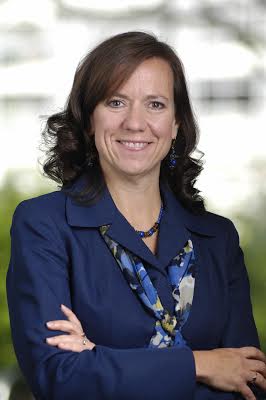In collaboration with CHIME, Becker's Hospital Review'snew "Life of a Healthcare CIO" series features leading hospital and health system CIOs from across the country who are sharing their experiences, best practices and challenges.
To recommend a CIO to be featured in this series, please contact Helen Gregg (hgregg@beckershealthcare.com).
An interview with Phyllis Teater, CIO of The Ohio State University Wexner Medical Center in Columbus. (Interview has been edited for length and clarity.)
Question: You've been CIO of Wexner Medical Center for four years. How has your job changed since you began?
Phyllis Teater: The biggest way it has changed in the past four years is that the industry is moving from [the job of CIO] as an IT-based job, where your job is to care for the systems and put them in and make them run and all of the things people think of traditionally, to a job focused on being a part of the executive team. It's now about being a leader and innovating. It's about thinking about how IT can help the business but also how to participate in all levels of executive discussion and be engaged, helping with and without IT.
Q: In your time with Wexner, what has been your biggest accomplishment?
PT: Two years ago in October, we went live with a huge system conversion and installation all on the same day. We trained 14,000 people (not in one day) and cut over our whole system. All of our hospitals and clinics went from the old to new clinical system, scheduling systems, billing systems and ancillary system in the same day. Preparing for those events and implementing the resulting organization changes and then ensuring the organization was stabilized and got comfortable after the implementation was the biggest thing I have been a part of, and helping the organization through that is my and my team's biggest accomplishment.
Q: What do you see as your biggest misstep or mistake?
PT: I think when I first came to this job I had lots to learn and I think, because I was still somewhat unsure of myself in that role, I engaged more in areas where I was most comfortable and where I had focused previously. I have since realized that often as a leader and a member of the executive team you should focus on engaging more in the areas you're not as comfortable in and talking about things you know less about, to be sure you're always stretching and reaching and not just relying on past strengths and staying where you feel comfortable. It's a learning process.
Q: Looking back over the past month, what has taken up the majority of your time?
PT: The majority of my time over the past month has been spent with an outside consultant we've engaged to look at the operational efficiency, effectiveness and growth of the services we offer at the medical center. We have been involved in all the team and now one of them is focused on IT processes and how we can grow and become more efficient. That's taken more of my time in the past month than anything else.
Q: What is the biggest challenge you're facing right now?
PT: It seems like there are so many. [Laughs.] If I had to put it into a nutshell, it is just managing the demand for new ideas, innovations and projects, many of them related to preparing for healthcare reform. The healthcare industry has really taken off with the realization that IT can help the industry, so there's just so much to sort through. Even with a good governance structure in place, there's so much to triage. A lot of the individual things are challenging themselves, but keeping up with all of the change in healthcare right now is the toughest. Once we decide to do a project and get into it, it gets easier, but it's about managing all the incoming.
Q: What is one lesson you've learned during your tenure you'd like to share with other CIOs?
PT: I've learned so much, it was hard to pick! I think one of the big lessons is to be willing to understand, and to put yourself into the customer's shoes, whether they're patients, a department chair or a registration clerk. I don't think a CIO can be successful without putting yourself in others' shoes, and understand where your customer is and where they are headed. Without that, you run up against so many barriers because you just get so sure your customers don't know enough or don't see the real reason behind something or don't understand IT, or all of the above. But, most often it's because you as the CIO or IT leader don't understand them.
That has come home to me again and again. Most people aren't crazy; most people have a reason [for what they want]. I see this so often in healthcare: "Oh, this physician is so hard to work with." Maybe you just don't understand him. Go on a ride-along, spend time in their world and understand their problems are business problems, not just IT problems.
To make sure I am helping them, when I go to see a department leader or make rounds it often starts out with them telling me about their IT problems. I listen and take the necessary steps, but my goal is to get them to tell me about their business problems. Then I can bring in my background and skills to help them solve the business problem. It might be oversaid, but you can only help customers if you understand them.
More Articles on Hospital CIOs:
The Life of a Healthcare CIO: KishHealth System's Heath Bell
The Life of a Healthcare CIO: Lutheran Health Network's Keith Neuman
The Life of a Healthcare CIO: Mt. San Rafael Hospital's Michael John Archuleta

